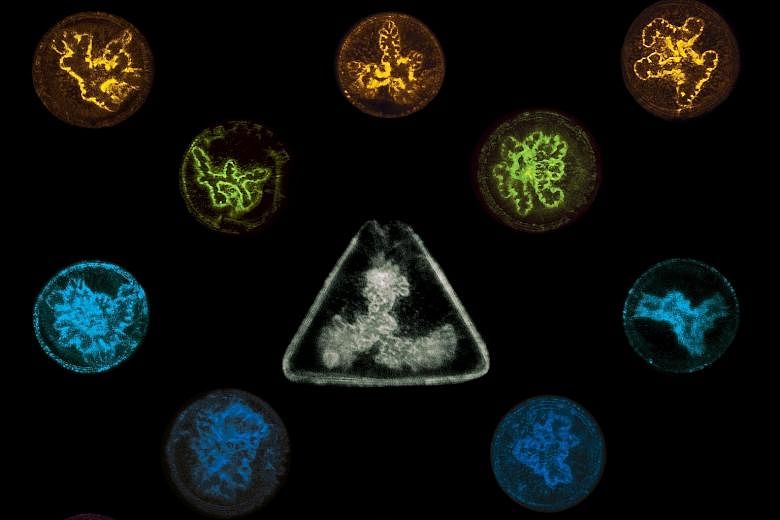Researchers find way to turn exhaust into fuel
Every day, people burn fuel to cook, travel and generate electricity. The process gives off carbon dioxide and water, among other by-products.
University of Texas at Arlington (UTA) researchers have now found a way to reverse the process, making fuel from carbon dioxide and water in one step. This could help limit global warming by removing carbon dioxide from the atmosphere to make fuel. Oxygen is also released back into the environment, a boon to air quality.
The liquid fuel is similar to that in cars and planes, making it easy to distribute, said Professor Frederick MacDonnell, UTA interim chair of chemistry and biochemistry.
In an article in the Proceedings Of The National Academy Of Sciences, the researchers described the conditions of light, heat and pressure used to achieve the one-step conversion. They also envision using special curved mirrors to concentrate sunlight to provide heat and light for the reaction, making it even more environmentally friendly.
Scientists create diabetic-friendly bread
Bread is a popular breakfast option, but most types are unsuitable for diabetics as the bread is digested rapidly, causing a sudden spike in blood sugar levels. Eating too much bread could raise the risk of obesity and associated diseases such as type II diabetes for normal people.
A team from the National University of Singapore has formulated a recipe for healthier bread by adding a natural plant pigment, called anthocyanin, extracted from black rice. This new bread is digested at a slower rate and is high in antioxidants, and could prove a healthier option.
Anthocyanins are naturally occurring pigments in fruit and vegetables such as blueberries, and are responsible for the orange, red, violet and blue colours observed in nature. Anthocyanins are rich in antioxidant properties and can reduce blood glucose levels.
The researchers said this is the first study in which anthocyanin extract has been incorporated into bread, opening up the possibility of creating other diabetic-friendly and healthy food products.
S'pore team plumbs the body's plumbing
Like a city relying on pipes for clean water, the major organs of the human body depend on networks of microscopic tubes to transport substances essential to their function. When these tubes are in the wrong size and shape, they can cause problems like kidney disease.
A team of scientists from the National University of Singapore, Singapore's Agency for Science, Technology and Research and France's National Centre for Scientific Research has discovered the biological mechanism for the production of epithelial tubes. The study found that the shape and size of these tubes may be affected by mechanical forces between cells and their surroundings. The findings, published in Nature Cell Biology, offer hope for developing better therapies for diseases.
Compiled by Lin Yangchen

